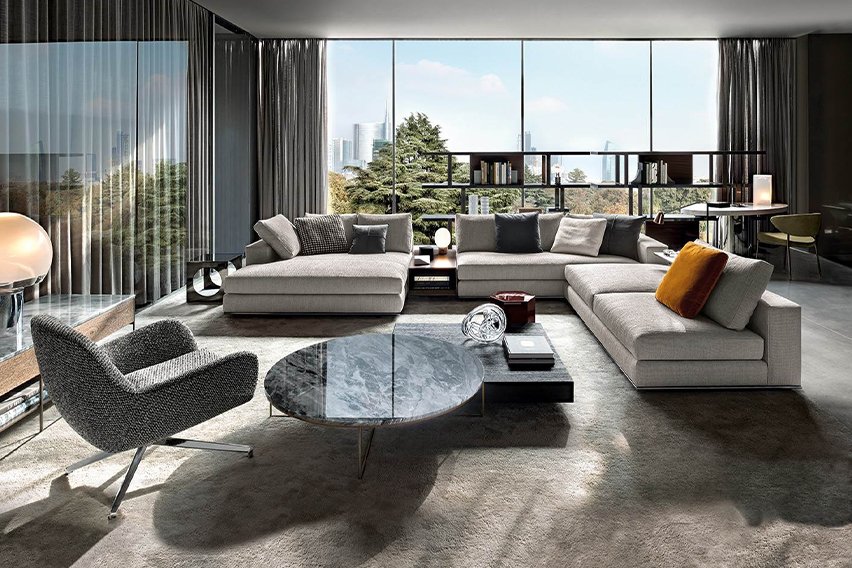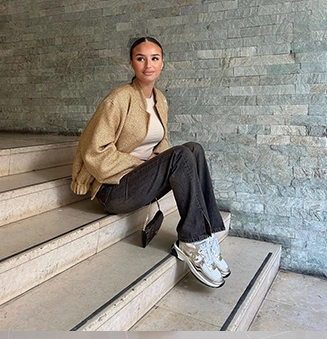
In the fast-paced and often chaotic world in which we live, our homes serve as refuges – refuges where we seek comfort, security and, above all, harmony. The concept of a balanced home environment goes beyond mere aesthetics; It involves the integration of elements that promote a sense of balance, calm and well-being. Join me on a journey as we explore the art of harmony and discover practical ways to create a balanced and calm living space.
Balance is a fundamental principle in design, art and life itself. In the context of our home, achieving balance requires a thoughtful arrangement of elements to create a harmonious and visually pleasing environment. In a balanced home, all components complement each other, creating a sense of unity and coherence. The right balance in your living space not only enhances its aesthetics, but also contributes to a peaceful and soothing atmosphere.

Color plays a crucial role in setting the tone of a room and influencing our emotions. To create a balanced home environment, consider a color palette that fits both your personal style and the ambience you desire. Harmonizing colors, whether through contrasting or complementary shades, contribute to a cohesive and visually appealing atmosphere. Soft, neutral tones can have a calming effect, while pops of color add vibrancy without overwhelming the senses.
The placement of the furniture is crucial for the balance in the room. Consider the size, shape and function of each piece to ensure a harmonious layout. Symmetry is a classic approach in which identical or similar elements are arranged on either side of a central axis. However, asymmetry can also create balance through the strategic placement of different but visually similar elements in the room. Experiment with furniture arrangements to find the configuration that promotes a sense of balance and flow.
Lighting is a powerful tool for creating the atmosphere of a home. A balanced lighting concept combines natural and artificial light sources to create depth and warmth. Consider incorporating a mix of ambient, task and accent lighting to illuminate different areas of your home. Natural light, in particular, has the ability to brighten up and energize a space. Maintain a balance between natural and artificial light, allowing for flexible adaptation to different moods and activities throughout the day.

Introducing a variety of textures and materials adds richness and tactile appeal to your home. From soft fabrics to smooth surfaces to rough textures, the juxtaposition of different elements creates a dynamic and inviting atmosphere. Consider using natural materials like wood, stone, or woven textiles to give your space an organic feel. The key is to find a balance between contrasting textures, avoiding monotony while maintaining a cohesive overall design.
Clutter disrupts the flow and harmony of a home environment. The art of balance also extends to the art of decluttering and simplifying your space. Evaluate each room and identify items that serve a purpose or bring joy and consider separating from the others. Minimalism is a design philosophy that emphasizes simplicity and functionality, creating a calm and uncluttered background for daily life. Be mindful of possessions and let go of unnecessary items to create a balanced and calm living space.
Bringing elements of nature into your home will help create a harmonious environment. Houseplants not only improve the visual appeal of a room, but also purify the air and connect us with nature. Consider incorporating greenery into different spaces and choosing plants that thrive in different lighting conditions. Additionally, natural materials such as wooden furniture and stone accents evoke a sense of the organic world and contribute to a balanced and grounded atmosphere.
Harmony is a subjective concept and achieving balance in your home must reflect your personal preferences and lifestyle. Customize your living spaces to suit your tastes and needs. Display valuable personal items, incorporate meaningful artwork, and create functional spaces that fit your daily activities. Personalization gives your home a unique touch by reflecting your identity and contributing to the overall feeling of harmony.
Creating a balanced home environment is an art that requires a thoughtful and conscious approach. From the colors of your walls to the arrangement of furniture to the inclusion of natural elements, every decision contributes to the overall harmony of your living space. As you set out to create a balanced home, remember that the goal is not perfection, but a sense of comfort, calm, and well-being. Strive for a space that reflects your spirit, aligns with your values, and serves as a sanctuary of balance and harmony amidst life’s complexities.





